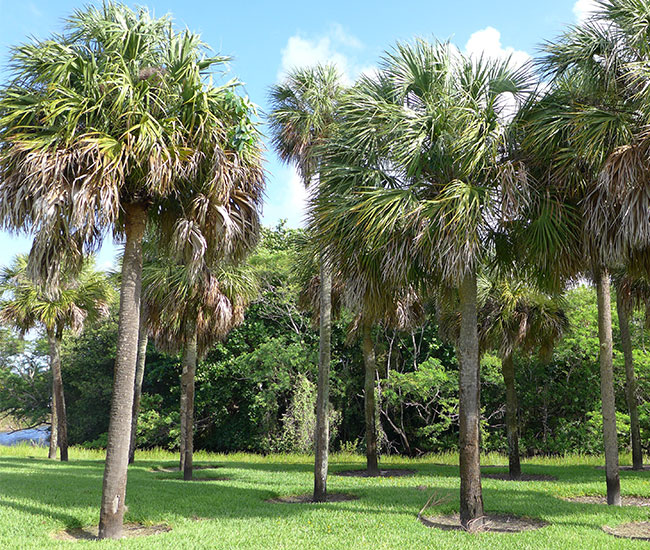
While Virginia may not be the ideal location for palm tree cultivation, there are several cold-hardy palm varieties that can thrive in the state’s unique climate.
Virginia experiences a mild, humid coastal climate characterized by hot, humid summers and cold, snowy winters. July typically sees an average temperature of 78°F (26°C), while January’s average temperature hovers around 36°F (2°C).
The state is susceptible to tropical cyclones, hurricanes, tornadoes, and winter storms, with annual snowfall ranging from 8 to 15 inches (20-38 cm). Virginia has recorded its highest temperature at 110°F (43°C) and its lowest at -30°F (-34°C). USDA hardiness zones in Virginia range from 5a to 8a.
Where Do Palm Trees Grow In Virginia
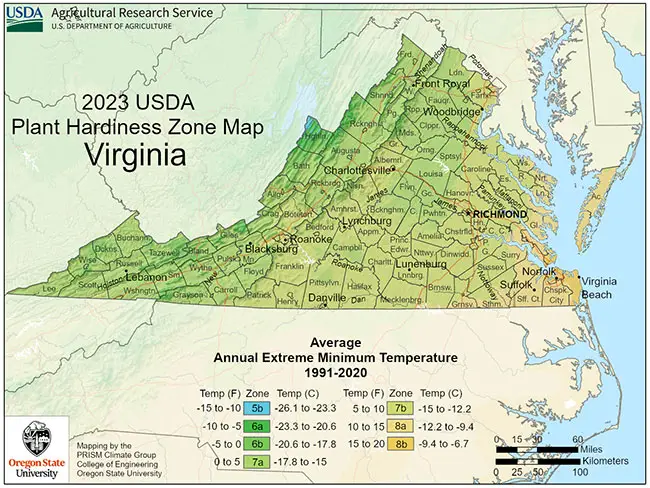
In the warmer regions of Virginia, you can discover a variety of cold-hardy palms, including the Needle palm, Cabbage palm, Dwarf Palmetto palm, Pindo palm, Mediterranean Fan palm, Mexican Fan palm, Windmill palm, and even the California Fan palm.
However, it’s important to note that most palms along the immediate coast face challenges due to the strong winter winds, resulting in a survival rate of only around 50%.
A visit to Virginia Beach will reveal that many palms appear to have suffered significant winter damage. Palms such as the Queen palm and Pygmy Date palm, which are only cold-hardy to zone 9b, are unlikely to survive a single winter in Virginia Beach.
Many beachfront hotels choose to plant warmth-loving palms, such as the coconut palm, each year for the tourist season, fully aware that these plants will not survive the winter. Some even cultivate tropical plants in pots, moving them in and out of greenhouses as needed.
While most palms in Virginia Beach are intentionally planted, there are also some that grow naturally in the area. Palms at private residences have a significantly better chance of thriving when provided with winter protection and planted in a microclimate—a location with slightly different temperatures than the surrounding area.
To enhance the chances of survival during cold winter months, consider planting palms in areas sheltered from strong winter winds, particularly on the south sides of buildings and away from the beachfront.
The first three years after planting are crucial for palm tree establishment, so even the most cold-tolerant palms should receive protection when they are young.
If you decide to grow palms in Virginia without winter protection, be prepared for them to look their best for only a small portion of the year
10 Palm Trees That Grow in Virginia
Palm trees can thrive in the warmer areas of Virginia, typically starting with zone 7b and higher. To ensure success, it’s important to select cold-hardy palm varieties that can withstand temperatures as low as 5°F (-15°C). Here are some palm trees that can successfully grow in Virginia:
1. Cabbage Palm Tree (Sabal palmetto)
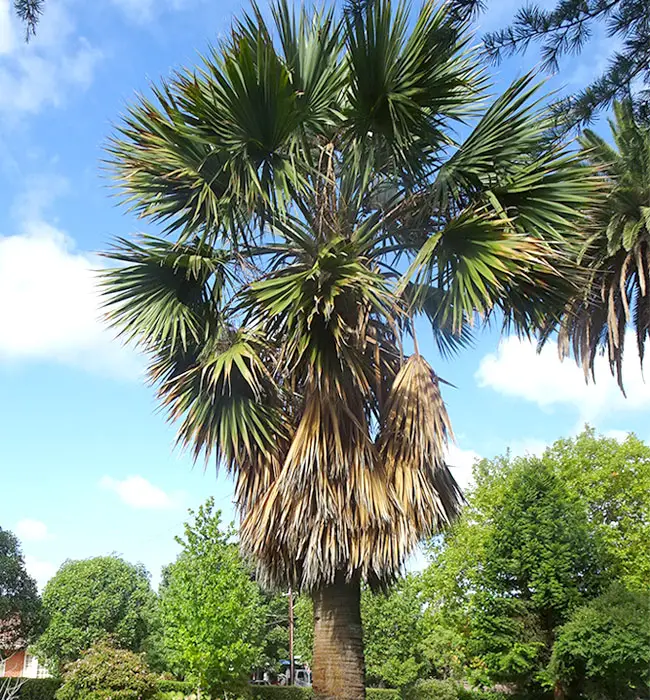
The Cabbage Palm Tree, scientifically known as Sabal palmetto, stands out as one of the cold-hardiest palm varieties. Its popularity in Virginia is attributed to its remarkable durability and its capacity to thrive in diverse weather conditions and soils.
This resilient palm can endure temperatures as low as 10°F when it reaches maturity, making it an excellent choice for regions within USDA Zones 8a (with minimum temperatures of 10 – 15°F) through Zone 11 (where temperatures remain above 40°F).
2. Pindo Palm Tree (Butia capitata)
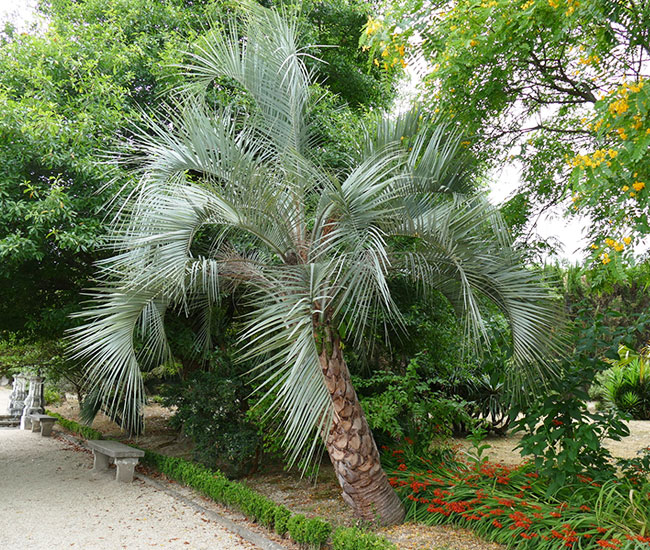
The Pindo Palm Tree, scientifically known as Butia capitata or Butia odorata, is a striking palm species characterized by its elegant fronds, making it an ideal choice as a focal point in any landscape. One of its unique features is its ability to produce edible fruits that are often used to make delicious jelly.
Remarkably cold-hardy, this palm can withstand temperatures as low as 5-10°F and has been known to survive even as low as 0°F when it reaches maturity.
This makes it an excellent choice for regions falling within USDA Zones 8a (with minimum temperatures of 10 – 15°F) to Zone 10b (where temperatures range from 35 – 40°F).
3. Windmill Palm Tree (Trachycarpus fortunei)
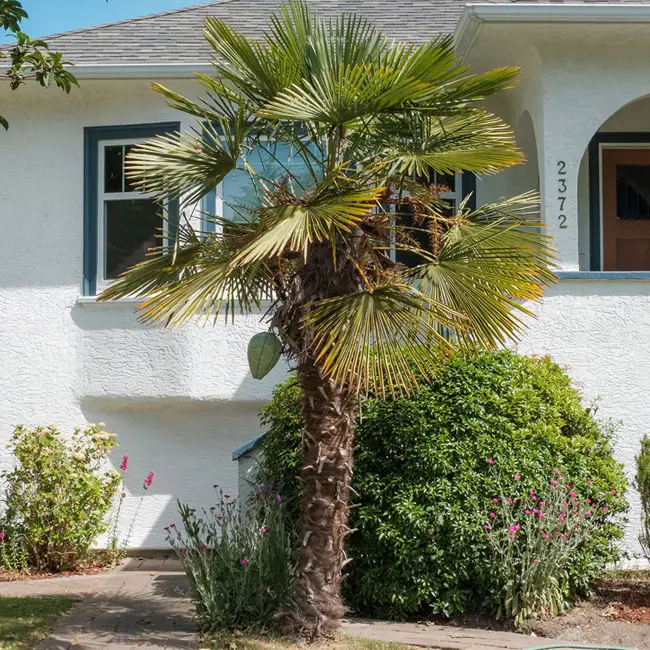
The Windmill Palm Tree, scientifically named Trachycarpus fortunei, is highly regarded for its exceptional cold hardiness and durability. It can endure both drought and low temperatures down to 10°F.
However, temperatures lower than 10°F can result in leaf damage. Originating from China, it is accustomed to low temperatures and even regular snowfall.
This palm thrives best in USDA Zones 8a (with minimum temperatures of 10 – 15°F) through Zone 11 (where temperatures remain above 40°F).
4. Needle Palm Tree (Rhapidophyllum hystrix)
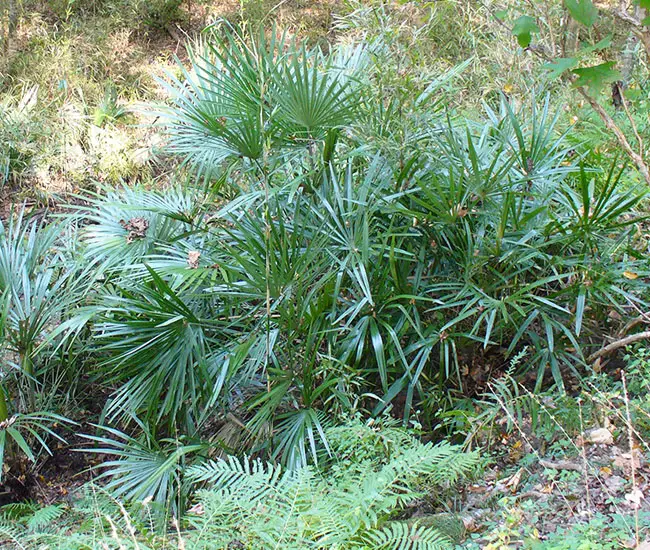
The Needle Palm Tree, scientifically known as Rhapidophyllum hystrix or Rhapidophylum hystrix, is one of the most cold-hardy palm trees, capable of tolerating temperatures as low as 10°F and even withstanding freezing weather down to -5°F without any protection.
It can be found growing in Virginia state and, with some winter protection, can potentially thrive in Zone 7. However, it is most suited for USDA Zones 8a (10 to 15°F) through 10b (35 to 40°F).
5. Saw Palmetto Palm (Serenoa repens)
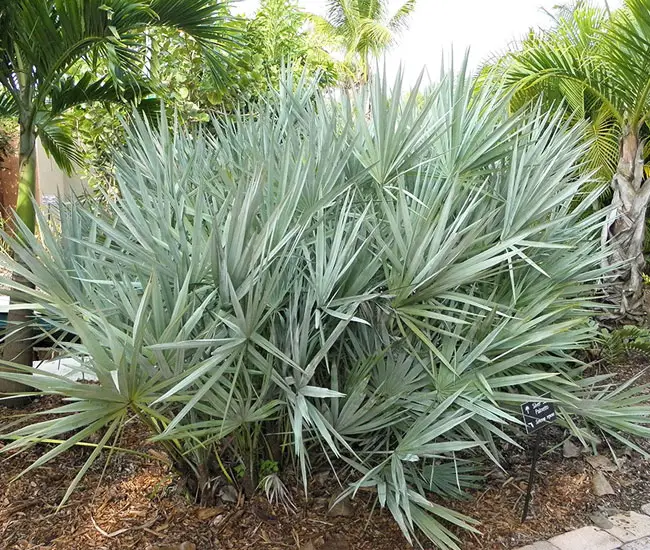
The Saw Palmetto, scientifically named Serenoa repens, is native to coastal areas of the Southeast, including South Carolina. It is a popular palm tree choice for use as a screening plant, focal point, or filler in planting beds.
This dense, adaptable plant is both drought-tolerant and cold-tolerant, making it suitable for landscapes in USDA Zones 8a (10 – 15°F) to 11 (above 40°F).
6. European Fan Palm Tree (Chamaerops humilis)
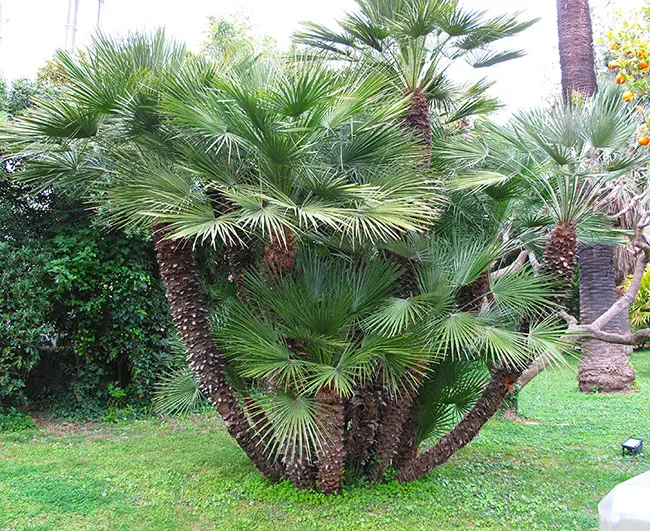
The European Fan Palm, also known as the Mediterranean Palm, is a slow-growing palm native to the Mediterranean region of Europe and northern Africa.
This attractive, bushy, evergreen palm can tolerate cold temperatures down to 5-10°F but can survive down to 3°F (-16°C) without permanent damage when mature enough.
It will shed all its leaves if the temperature drops lower than 16°F. This palm is well-suited for landscaping in USDA Zones 7b-11, and with some winter protection, it can be grown in Zone 7 in Virginia.
7. Dwarf Palmetto Palm (Sabal minor)
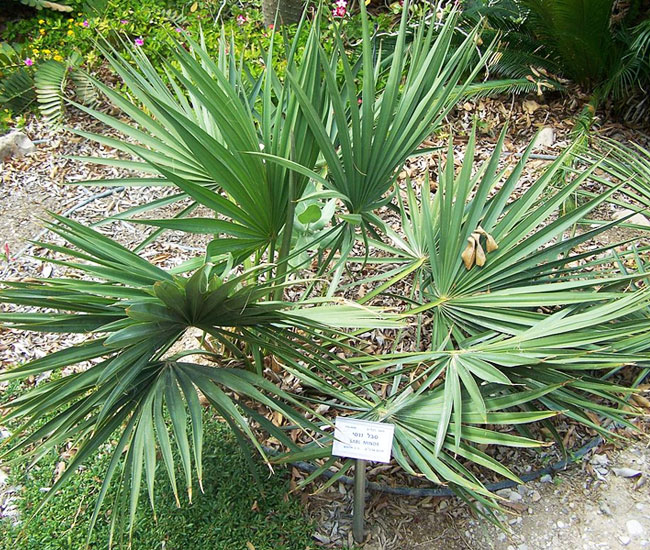
The Dwarf Palmetto, scientifically named Sabal minor, is native to the southeastern United States. Often mistaken for the saw palmetto, the dwarf palmetto is a clumping plant with a trunk that is either very short or below the ground.
It can tolerate cold temperatures down to 20°F but is known to survive exposure to -5°F and even -10°F when mature enough.
While it thrives best in USDA Zones 7 (0°F – 5°F) to 10b (35 – 40°F), you may attempt to grow it in Zone 6 with substantial winter protection. However, it’s worth noting that success beyond Richmond, VA, could be challenging.
8. California Fan Palm Tree (Washingtonia filifera)
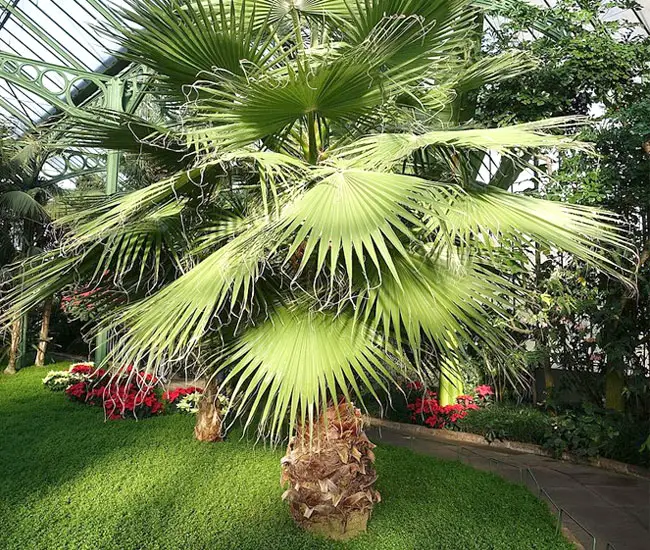
The California Fan Palm Tree, scientifically known as Washingtonia filifera, is a highly favored palm variety admired for its durability and exquisite appearance.
It displays an impressive adaptability to a wide range of soil types and can endure cold temperatures down to 10°F. When grown in the warmer regions of Virginia, it thrives as long as it is shielded from strong cold winds.
This palm flourishes best in USDA Zones 8a through 11, where minimum temperatures range from 10 to 15°F.
9. Mexican Fan Palm Tree (Washingtonia robusta)
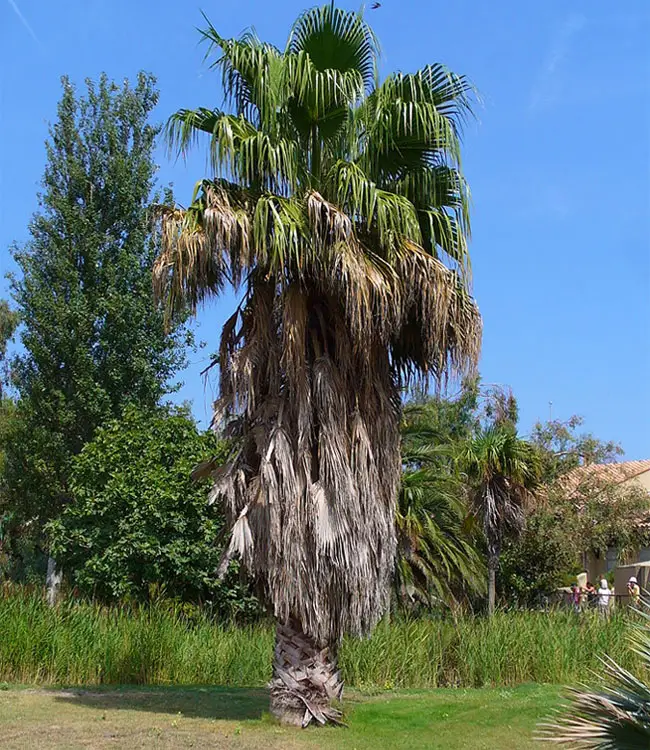
The Mexican Fan Palm Tree, scientifically named Washingtonia robusta, is another popular palm renowned for its striking appearance and its capacity to thrive in diverse conditions.
It exhibits a cold tolerance down to 10°F, making it a great choice for landscaping in USDA Zones 8a (with minimum temperatures of 10 to 15°F) through Zone 11 (where temperatures remain above 40°F).
When cultivating it in Virginia’s warmer areas, it is advisable to position it away from beachfront locations.
10. Miniature Chusan Palm Tree (Trachycarpus wagnerianus)
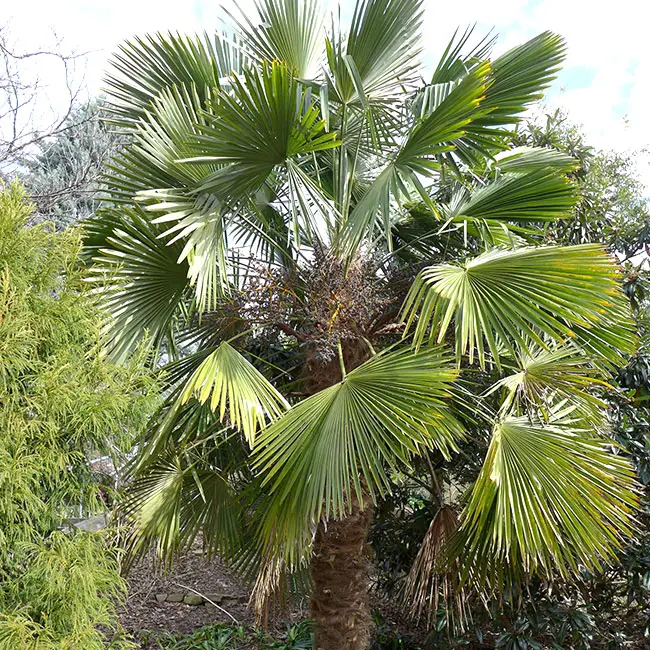
The Miniature Chusan Palm Tree, scientifically known as Trachycarpus wagnerianus, is native to China and is even known to withstand snowy conditions.
It stands as a robust and cold-hardy palm, capable of enduring cold temperatures down to 10°F, making it an excellent addition to landscapes in USDA zones 8 through 10b.
In the warmer regions of Virginia, it can thrive successfully, provided it is planted away from windy locations. However, if you intend to grow it in Zone 7, be prepared to provide winter protection, as it may not survive without it.
Major Cities in Virginia
Alexandria – Hardiness Zone 7b
Arlington – Hardiness Zone 7a
Chesapeake – Hardiness Zone 8a
Hampton – Hardiness Zone 7b
Harrisonburg – Hardiness Zone 6a
Midlothian – Hardiness Zone 7a
Newport News – Hardiness Zone 7b
Norfolk – Hardiness Zone 8a
Portsmouth – Hardiness Zone 8a
Richmond – Hardiness Zone 7a
Roanoke – Hardiness Zone 7a
Stafford – Hardiness Zone 6b
Virginia Beach – Hardiness Zone 8a

The Sabal Palmetto (tall one) is also found in Virginia. We have them they survive zone 8a – 10. Please add them to the list.
where can we buy the saplings – want to grow them in Fairfax county VA